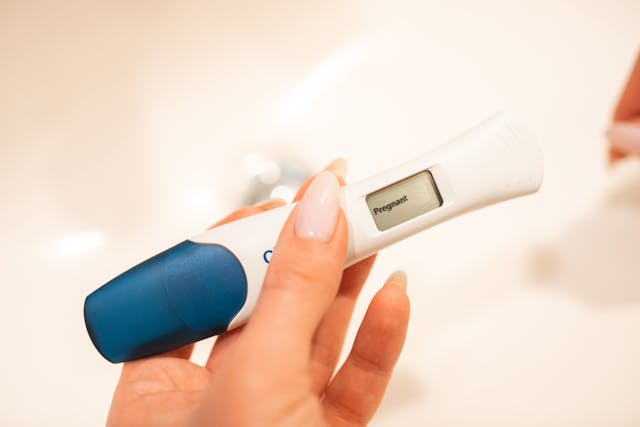Approximately 10 to 14 days after conception, the fertilized egg enters the womb and attaches itself to the uterus lining. Bleeding can occur during this time, known as implantation bleeding. Here’s what you need to know about implantation bleeding in early pregnancy.
Implantation bleeding is expected, though it’s not fully understood why it happens. The bleeding may come with other symptoms, such as slight cramping.
Am I Pregnant?
Women who do not know they are pregnant often mistake this bleeding with their period because it happens about four weeks into the pregnancy when they are expecting some bleeding. It’s not uncommon for a woman to count this as a light period, only to find that she’s pregnant closer to 8 weeks when she misses her period again!
Implantation bleeding is usually much lighter than a period, often a dark red or brownish color, and lasts for only a short time, anywhere from a few hours to a few days. If you are experiencing this type of bleeding and are unsure if it is your period, you may want to take a home pregnancy test to confirm, especially if you are experiencing any other pregnancy symptoms.
Is There Anything to Worry About?
If you already know that you are pregnant, implantation bleeding can be scary. You may fear that you are having a miscarriage or something wrong with the pregnancy. In most cases, this bleeding is nothing to worry about. Unless you have other worrisome symptoms, there is no need to contact your care provider.
Other symptoms that are normal during this time are:
– breast tenderness
– bloating or a “full” feeling
– nausea
– gas
– mild cramping
Not all women experience implantation bleeding in early pregnancy, so don’t worry if it doesn’t happen to you. It is no indication of how healthy the baby is or how well the pregnancy progresses.
When to Worry
You should contact your doctor or midwife if your bleeding is heavy, bright red, lasts for more than a few days, or is accompanied by pain, low backache, extreme cramping, a foul odor, or other unusual symptoms.




